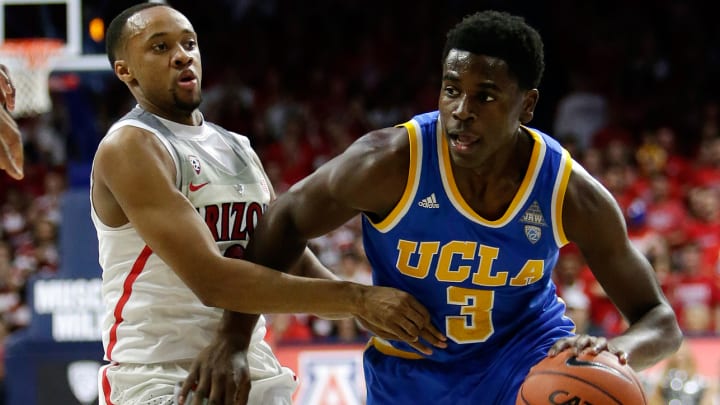How will UCLA retool after key personnel losses?

The college basketball off-season is long and largely lacking in major news developments. Programs are still finalizing their 2017 recruiting classes and sorting out which of their players will return for another season or jump to the professional ranks. We’ve got a long way to go until Midnight Madness. To help pass the time, SI.com is asking and answering three key questions about each of the teams in our Way-Too-Early Top 25. Here’s No. 19, UCLA.
1. If Thomas Welsh and Aaron Holiday leave, who fills the leadership void?
The Bruins are set to lose a lot from a team that won 31 games last season. Specifically, they’re set to lose more than two-thirds of their scoring, with Lonzo Ball, T.J. Leaf, Bryce Alford, Isaac Hamilton and Ike Anigbogu all off to the pros. And they could lose even more if Welsh and Holiday head to the NBA, too. (Those two announced they planned to enter the draft but not hire agents, which means they could return to school.)
The departures of Welsh and Holiday would hurt not just from a statical standpoint, but a leadership one as well. If they leave Los Angeles, who will coach Steve Alford turn to to create on-court chemistry and set a tone defensively? Who can he rely on for scoring help, especially in a crunch-time situation? It's a plus that UCLA is expected to get back Prince Ali and Alex Olesinski, who both missed last season with injuries, and Alford is bringing in a talented recruiting class, but having at least one veteran in the group would help immensely.
Can Saint Mary's center Jock Landale improve after stellar junior season?
2. Which of the Bruins’ talented freshmen emerges as a star?
As mentioned above, the Bruins are slated to bring in one of the top recruiting classes in the country. Scout.com ranked UCLA’s 2017 class second in the nation. The class includes two McDonald’s All-Americans—point guard Jaylen Hands and small forward Kris Wilkes—and the middle Ball brother, LiAngelo, who told the Los Angeles Times, as his play relates to Lonzo’s, “He’s his own player; I’m my own player. I like to score and get points up quick and he’s a team guy, he likes getting the ball in the right position.”
That could be interpreted as a player who you can rely on for scoring, or a potential headache who doesn’t want to pass the ball. Despite his name recognition, Ball is not the crown jewel of this recruiting class. That distinction belongs to either the 6’7'', 185-pound Wilkes or the 6’1'', 160-pound Hands, who are both five-star prospects. Also of note in the six-man class: Four of the prospects are from California, a testament to UCLA’s ability to keep local talent home.
The teams with the most on the line with remaining NBA draft decisions
3. How does Steve Alford manage the hoopla around LaVar Ball?
You probably heard about LaVar Ball and his ridiculous claims before you saw him at a UCLA game. As the Bruins crept toward the postseason, Ball started talking, a lot, and he became more a circus sideshow than a supportive parent. Here’s one example: After UCLA lost to Kentucky in the regional semifinals, Ball told the Orange County Register, “Realistically, you can’t win no championship with three white guys.”
It’s easy to ignore or placate a crazy parent when their child is the star of your team, and you need that star to win. It’s a lot harder to jump through those hoops when the player is not that good. LiAngelo Ball is considered the worst of the three boys and might find himself sitting on the bench for long stretches. How will dad handle that? And in turn, how will Alford handle dad?
